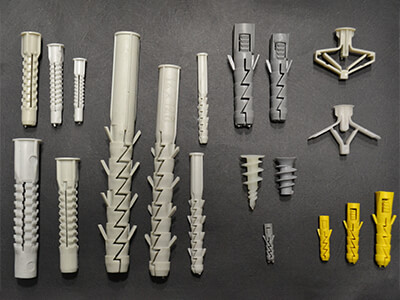
It's safe to say that it's quite obvious as to why houses and other buildings have doors and windows. Their function is self-evident, but what may not be as obvious are some of the problems that can arise when those features need to be replaced.
The good news is that most doors and windows have a decent lifespan. The even better news is that, when the time comes to replace them, you can do it in a few easy steps, provided you have the right tools and materials. Thanks to Buildworld, getting what you need is quick and simple. You can visit our online store, order what you need, and have it delivered to your preferred address, whether you are in the UK, Scotland, or Ireland.
The Tools You Need
You are going to require several tools when you install your new window or door, and it is important to make sure that you have them all before you start the project. Gathering everything you need and ensuring it is at hand can help you avoid unnecessary delays as well as the temptation to 'wing it', especially when it comes to checking the measurements or whether things are level.
Remember to ensure that your work complies with local building regulations and to get any permissions required from your local council before you start work.
Basic Tool Checklist:

Installing a New Window
If it's time to replace an old window, the first thing you should do is to use your tape measure to measure the width and the length of that window so that you know what size to purchase. Measure a second time to make sure you were accurate.
When you are ready to go ahead with the installation, you can start by removing the old window. Be sure to wear thick gloves and safety goggles when working.
Removing the Old Window
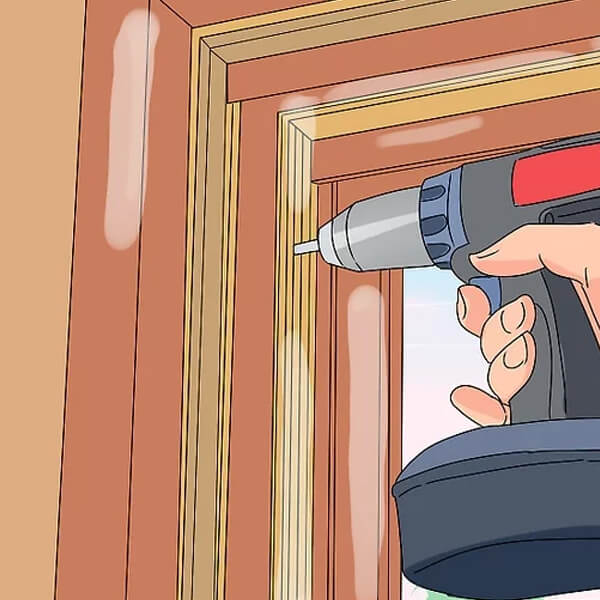
1. Unscrew windows that can open at the hinges and lift them out of the frame. You may need someone to help you with this. Remove fixed panes by removing the putty and the beading. When all the panes are out, use a handsaw to make angled cuts through the frame's upright sections.
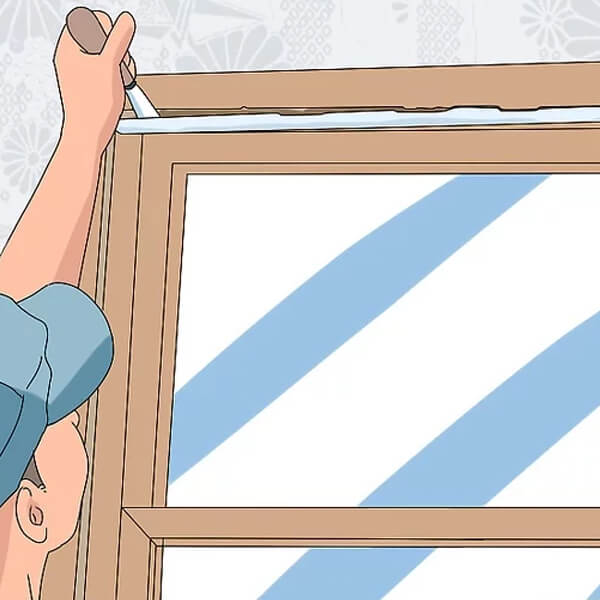
2. Remove the frame by hammering the curved end of a crowbar into the cut you made on one side of the frame. Pull the crowbar upwards. Doing so will widen the joint and allow you to remove the lower section. You can use a bolster chisel in place of a crowbar. Use the crowbar to remove the upper section. Follow the same procedure to remove the side sections.
3. If screws were used to fix the frame, use a small hacksaw to cut through them.
Preparing the New Window
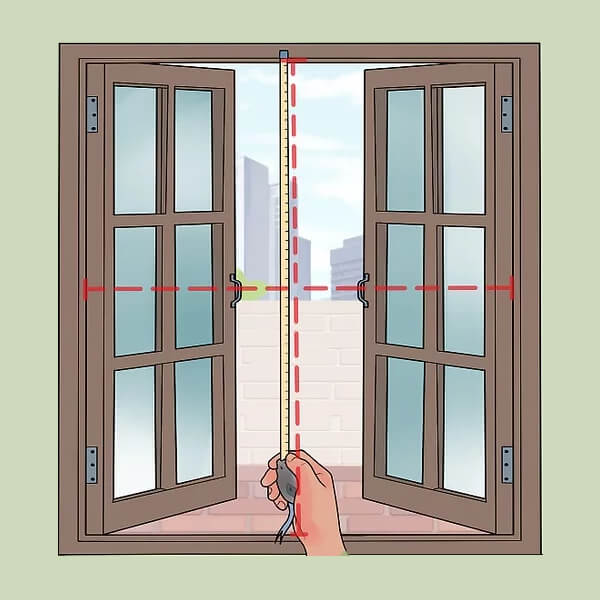
1. Measure the new window to ensure it will fit the space, allowing for a 5mm gap around the frame. If you need to increase the size of the new window, use frame extenders to add as much as 40mm to it.
2. Fit the handles. This usually is done by screwing them in place.
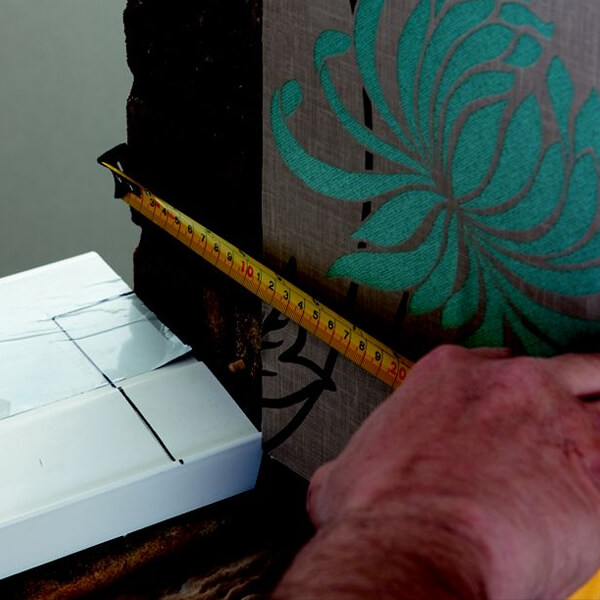
3. Adjust the size of the outer sill. Do this by measuring the depth of the outer wall and then cutting a notch into the sill so that it fits around the brickwork. You can use a hacksaw to cut the sill.
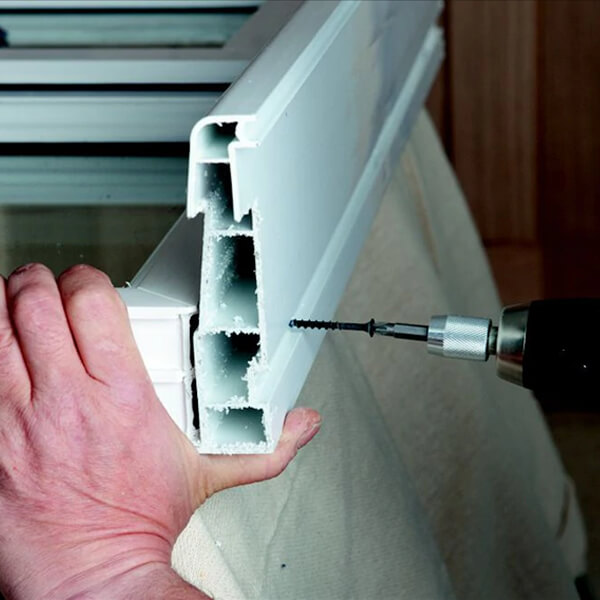
4. Attach the outer sill to the frame by screwing it in place, and then slide the frame fixers down the frame's side tracks.
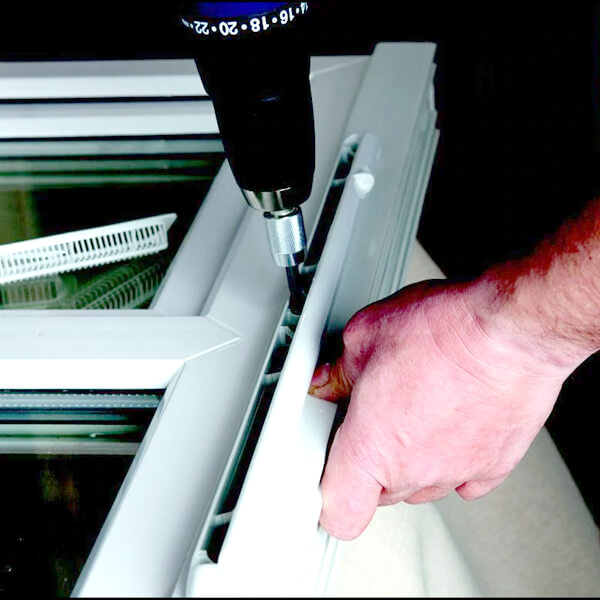
5. Attach the ventilator grille to the internal side of the frame, and then put the cover vent in its place.
Installing the Window
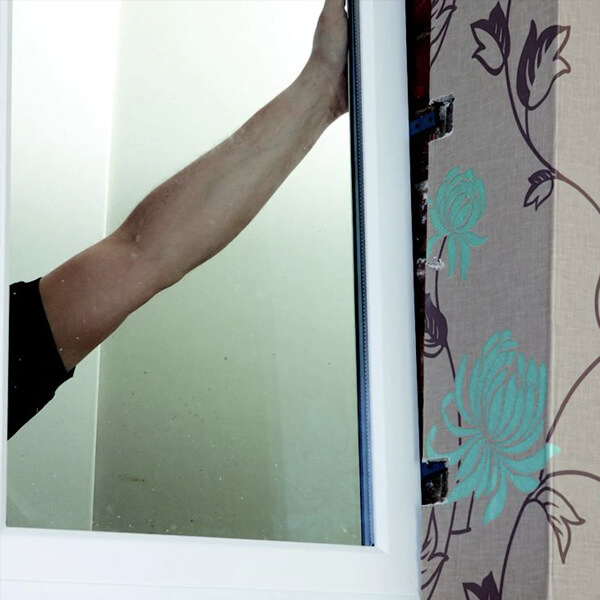
1. Mark the points at which you will attach the new window by making marks in the internal plasterwork. Put the new window in place and use spacers known as shims to wedge it in place.
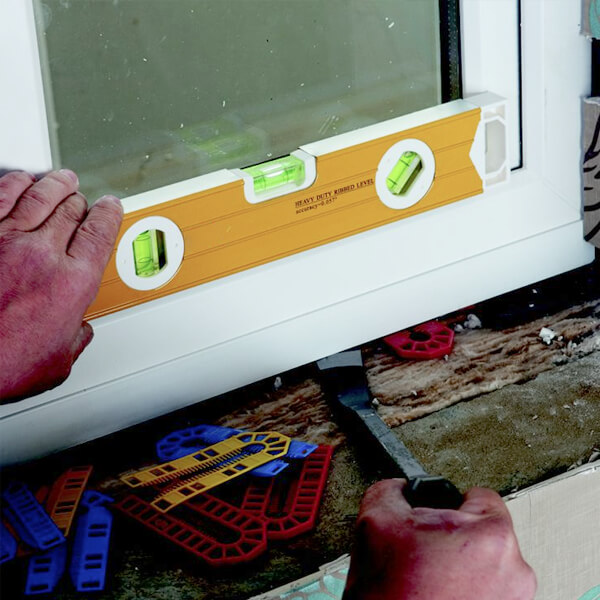
2. Use the spirit level to check that the window is level and vertical, and use spacers if you need to make any adjustments.
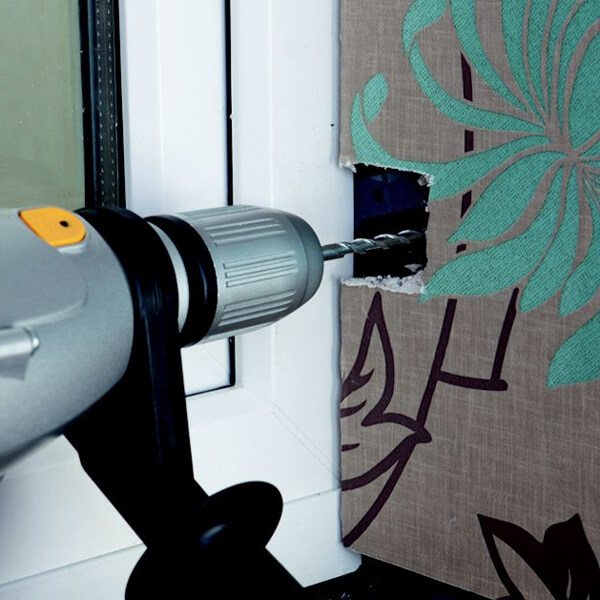
3. Drill pilot holes at each of the fixing points, insert wall plugs, and then screw the frame in place before measuring and cutting the interior sill to fit. Use the spirit level to check that it's level, and insert spacers if need be. Use screws, an appropriate adhesive, or masonry nails to fix it in place.
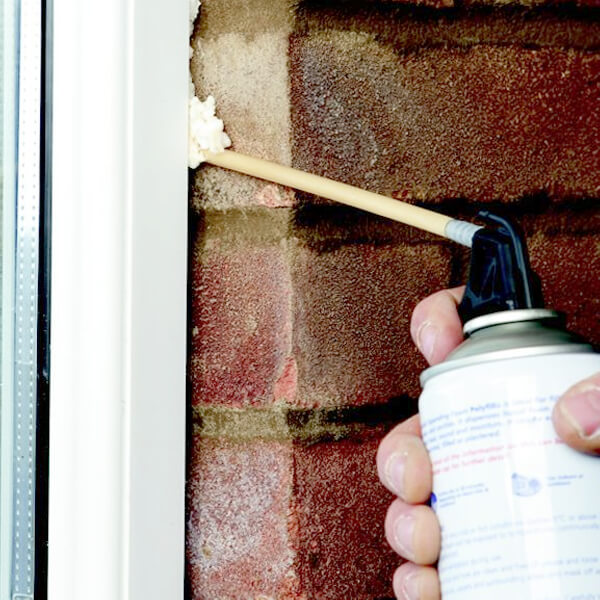
4. Use expanding foam to fill large gaps around window’s exterior, then trim it with a utility knife when dry. Use frame sealant to fill smaller gaps.
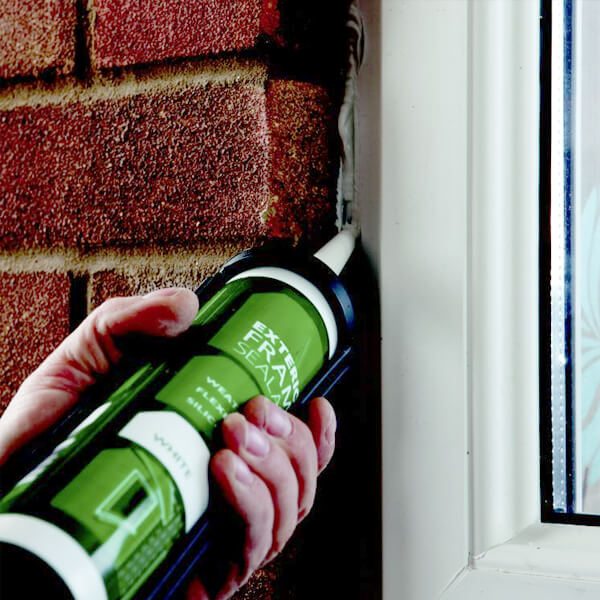
5. If you want a more finished look, use a trim that you can stick in place with frame sealant.
Installing a New Door
Before purchasing a new door slab, measure the width of the old door at the bottom, middle, and top, and use the widest measurement. You also need to measure the length and thickness. When you have your new door slab, you can start the job by removing the old door. Remember to use protective gear such as gloves and goggles.
Removing the Old Door
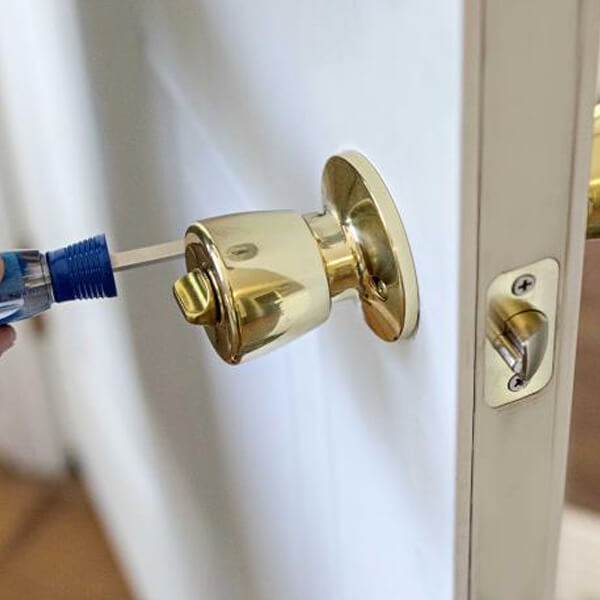
1. Before taking the old door off the frame, use a screwdriver or drill to remove the knob or handle, as well as any other hardware.
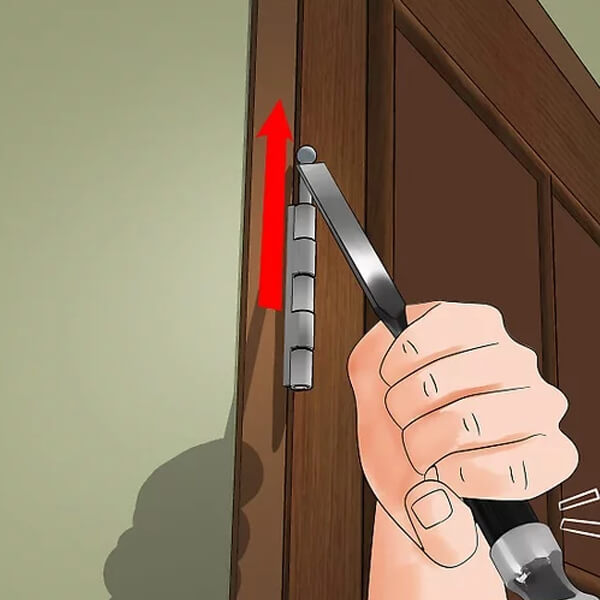
2. Use a screwdriver or drill to unscrew the screws from the hinges on the door, and then remove the door from the frame. If you are working on a pre-hung door, remove the hinge pins with a flathead screwdriver and a hammer before removing the hinges.
Preparing the New Door
1. Check the fit of the new door by placing the new slab in the frame. If you need to hold it in place, use spacers known as shims.
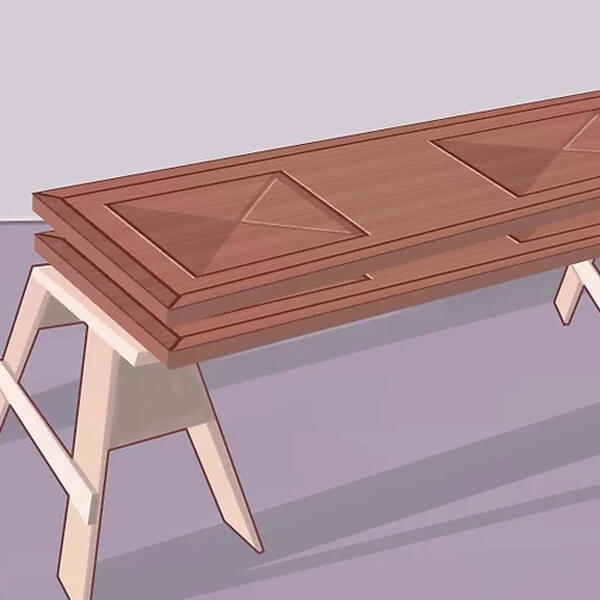
2. If you need to trim the new door, the easiest way to indicate where adjustments should be made is to lay it on a flat surface and then place the old door on top of it. Use a pencil to make the appropriate marking. Remember to orient the doors correctly and trim them at the bottom.
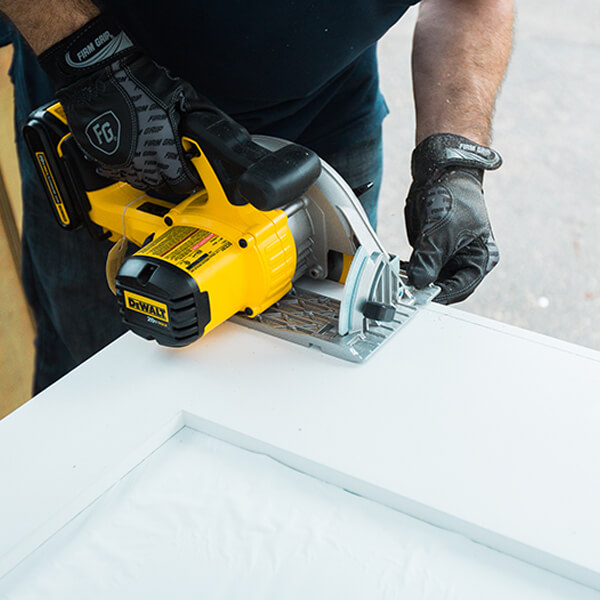
3. Score the line with a utility knife, and then cut the new door slab to size using a circular saw. Use an orbital sander to smooth the rough edges.
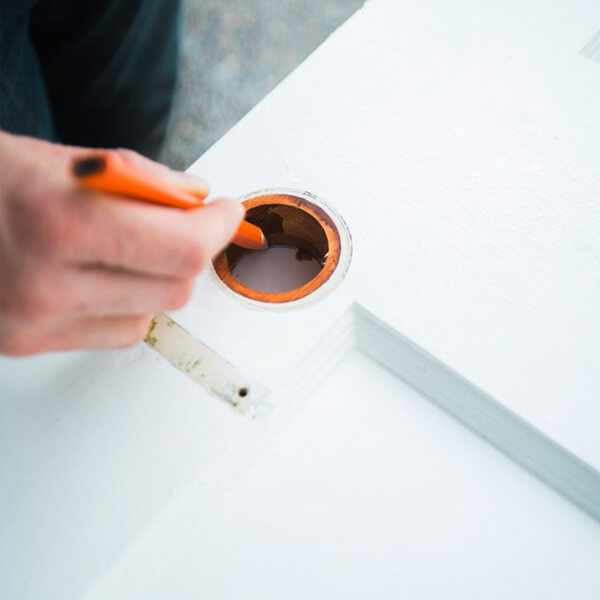
4. Place the old door slab on the new slab, and then use a pencil to mark the locations of the handle/knob and the hinges.
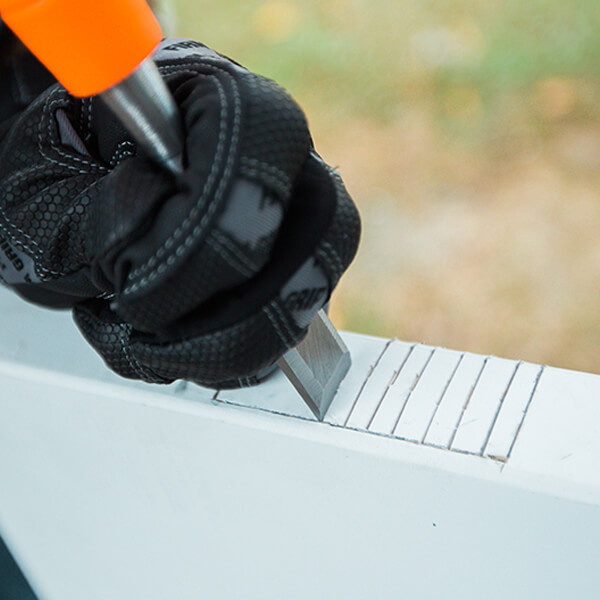
5. Use the utility knife to score the lines where the hinges will go, and then use a hammer and chisel to notch those areas. You can then knock off the notches with the chisel.
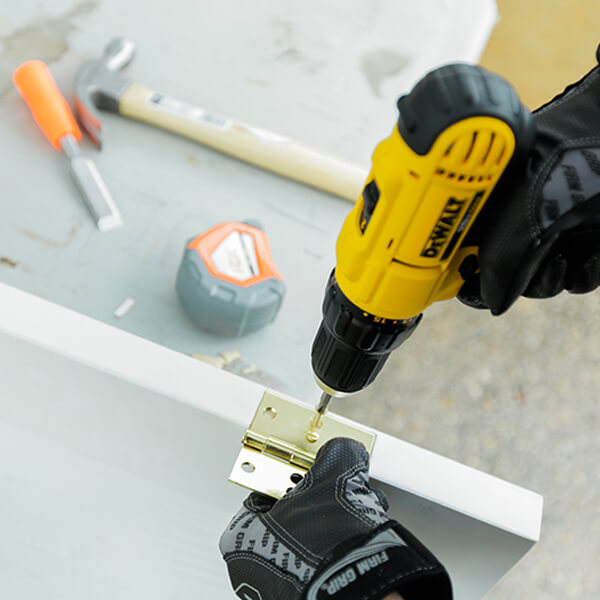
6. Attach the hinges to the new door slab, and then use the screws that came with the lockset to secure it to the door. Drill a hole into one side of the slab and then the other, and then drill a hole for the latch in the side edge.
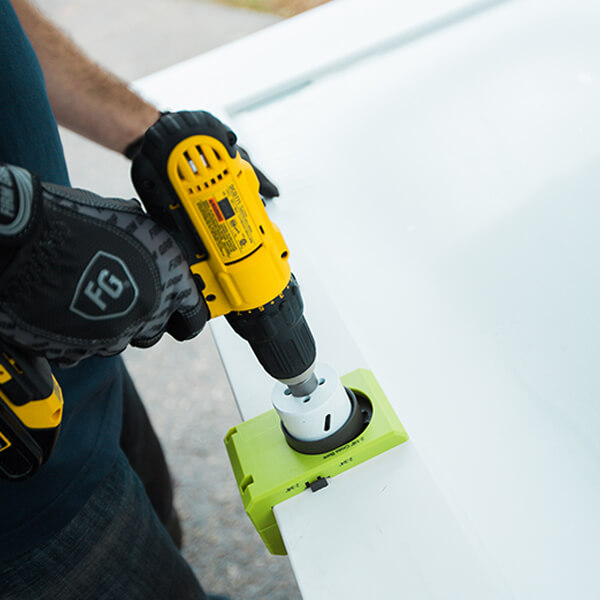
7. Fit the latch by tracing it with a pencil, scoring the line with a utility knife, and then chiselling it as you did for the hinges. The latch should be flush with the edge of the door.
Hanging the New Door
1. After fitting the latch, take the new door slab back to the frame and use shims to hold it in place.
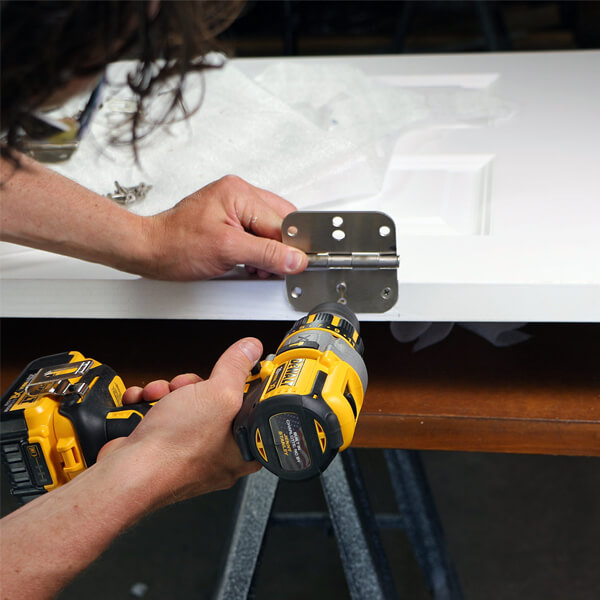
2. Screw one side of the hinges in place on the door frame.
3. Hang the new door and check that it fits perfectly. If not, use a pencil to mark the areas that need to be trimmed.
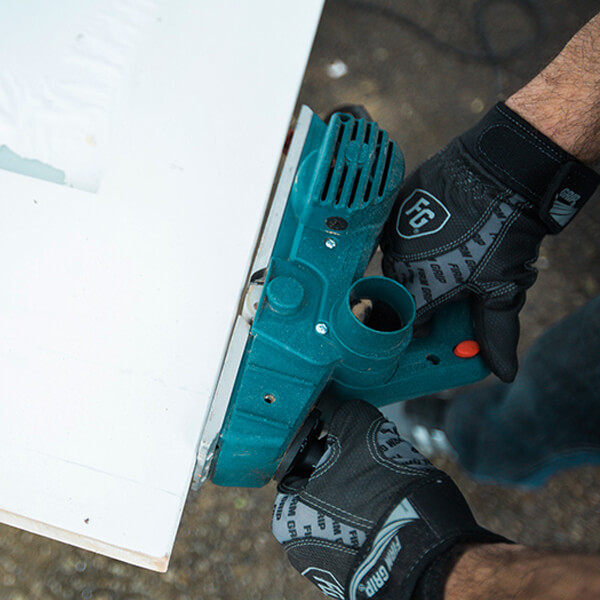
4. Remove the door from the frame and use an orbital sander or planer to make the necessary adjustments. Rehang the door and check that it fits. If not, make further adjustments. If it does fit, continue with installing the lockset. Consult the instructions that came with your set, as each set is slightly different.
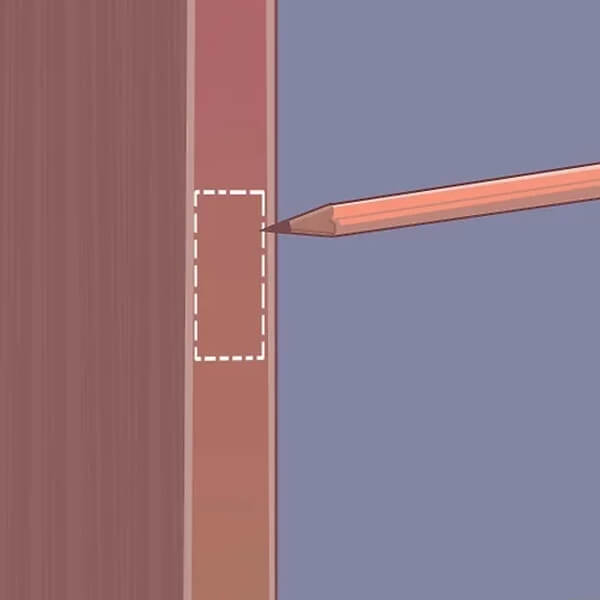
5. After installing the lockset in the new door slab, attach the latch plate to the door frame. Line up the plate with the latch, mark it with the pencil, score the line with the utility knife, and then use the hammer and chisel to notch it. Use a screwdriver and screws to screw the plate in place.
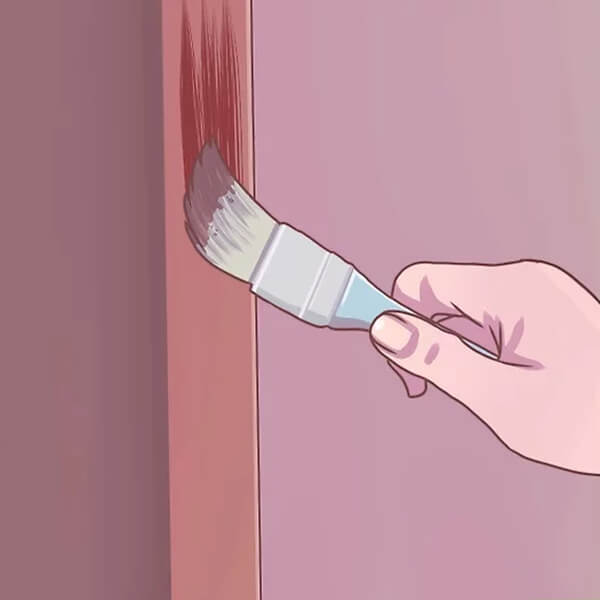
6. Paint the door as required. If the door has any glass in it, remove the plastic sheet covering the glass when you are finished painting.
Whether you are installing a new window or a new door, you should not find it too difficult. That said, it can be a time-consuming process, so be prepared to spend a few hours on it. Installing windows may take longer than installing doors, so it may help to make sure you have polythene sheeting to cover the space(s) if you need to continue with the project the following day. If you have any questions or need any recommendations, Buildworld's friendly staff will be more than happy to assist you.
Related Articles
Category
Doors & WindowsPosted On
9th January 2025
